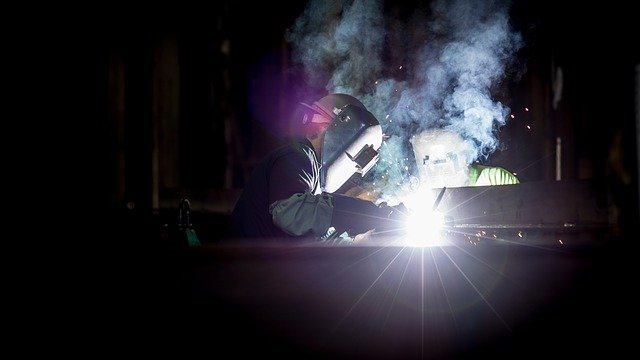Radiant energy refers to the energy that is transmitted in the form of electromagnetic waves, such as light or heat. This type of energy can be converted into mechanical energy, which is the energy associated with the motion or movement of objects. The conversion of radiant energy to mechanical energy is a fascinating process that occurs in various systems and devices. For example, solar panels harness the radiant energy from the sun and convert it into electrical energy, which can then be used to power mechanical devices. Another example is the conversion of radiant heat energy into mechanical energy in a steam engine. This process involves the use of heat to generate steam, which in turn drives a turbine to produce mechanical work.
Key Takeaways
| Conversion Example | Energy Source | Converted Energy |
|---|---|---|
| Solar Panels | Sunlight | Electrical |
| Steam Engine | Radiant Heat | Mechanical |
Understanding the Transformation from Radiant Energy to Mechanical Energy
Radiant energy, in the form of electromagnetic radiation, has the potential to be converted into mechanical energy. This transformation plays a crucial role in various applications, such as solar power conversion and the generation of mechanical energy in solar-powered devices. In this article, we will explore the process of energy transformation from radiant energy to mechanical energy and the factors that influence this conversion.
The Process of Energy Transformation
The conversion of radiant energy to mechanical energy involves several steps. Let’s take a closer look at the energy conversion process:
-
Solar Energy to Electricity: One of the most common examples of radiant energy transformation is the conversion of solar energy to electricity. This process is achieved through the use of photovoltaic cells, commonly known as solar panels. When sunlight falls on these panels, the photovoltaic effect occurs, generating an electric current. This current can then be used to power various devices and systems.
-
Sunlight to Kinetic Energy: Another way radiant energy is transformed into mechanical energy is through the use of solar thermal energy. Solar thermal power plants utilize mirrors or lenses to concentrate sunlight onto a receiver, which then heats a fluid, typically water or oil. The heated fluid produces steam, which drives a turbine, generating mechanical energy.
-
Heat Engines: Heat engines, such as steam engines and internal combustion engines, also play a significant role in the transformation of radiant energy to mechanical energy. These engines utilize the heat generated from the combustion of fuels, such as coal, oil, or gas, to produce mechanical work. The heat energy is converted into kinetic energy, which can be used to power various machines and vehicles.
Factors Influencing the Transformation
Several factors influence the transformation of radiant energy to mechanical energy. Let’s explore some of these factors:
-
Energy Transfer Efficiency: The efficiency of the energy transfer process plays a crucial role in determining the overall transformation from radiant energy to mechanical energy. Higher efficiency means a larger proportion of the radiant energy is successfully converted into mechanical work. Advancements in solar power technology and heat engine design have led to improved energy transfer efficiency, making the conversion more effective.
-
Renewable Energy Sources: The availability of renewable energy sources, such as solar power, has a significant impact on the transformation process. Solar panels and solar thermal power plants harness the abundant energy from the sun, providing a sustainable and environmentally friendly source of radiant energy for mechanical energy generation.
-
Temperature and Heat: The temperature of the radiant energy source and the ability to convert heat into mechanical work are crucial factors in the transformation process. Heat engines rely on the temperature difference between the heat source and the cold sink to generate mechanical energy. Higher temperatures and efficient heat transfer mechanisms contribute to better transformation efficiency.
Real-life Examples of Radiant Energy to Mechanical Energy Transformation
Radiant energy is a form of energy that travels in waves or particles, and it can be transformed into mechanical energy in various real-life examples. Let’s explore some fascinating examples where radiant energy is converted into mechanical energy.
Windmills

Windmills are a classic example of harnessing the power of radiant energy, specifically wind energy, and converting it into mechanical energy. These towering structures with rotating blades capture the kinetic energy of the wind and convert it into rotational motion. This rotational motion can then be used to power various machinery or generate electricity through the use of wind turbines and generators. Windmills have been used for centuries to grind grain, pump water, and generate power in wind farms.
Steamboats

Steamboats are another remarkable example of radiant energy transformation. In this case, the radiant energy is in the form of heat energy. Steamboats utilize the heat energy from burning fuel, such as coal or wood, to produce steam. The steam is then used to power a steam engine, which converts the thermal energy into mechanical energy. This mechanical energy is used to propel the steamboat through the water, enabling transportation and commerce along rivers and waterways.
Rockets

Rockets are an extraordinary example of radiant energy transformation on a grand scale. Rockets use a combination of chemical reactions and the principle of action and reaction to convert the energy stored in rocket fuel into mechanical energy. The combustion of the fuel produces hot gases that are expelled at high speeds through a nozzle. As the gases are expelled, they create a force in the opposite direction, propelling the rocket forward. This conversion of chemical energy into mechanical energy allows rockets to overcome Earth’s gravity and travel into space.
A Drinking Bird Toy
A Drinking Bird Toy, also known as a Dippy Bird, is a fun and quirky example of radiant energy to mechanical energy transformation. This toy consists of a glass bird with a wet head and a body containing a volatile liquid. When exposed to sunlight, the radiant energy heats up the liquid in the bird’s body, causing it to evaporate. As the liquid evaporates, it creates a pressure difference that causes the bird’s head to dip into a glass of water. This action lowers the bird’s center of mass, causing it to tip over. As the bird tips over, the liquid returns to the body, and the cycle repeats, creating a continuous dipping motion.
Welding
Welding is a practical example of radiant energy transformation used in various industries. Welding involves joining two or more pieces of metal by melting them together using intense heat. The radiant energy in the form of heat is generated by an electric arc or a flame. This heat energy is then used to melt the metal surfaces, creating a molten pool. As the metal cools and solidifies, it forms a strong bond, resulting in a welded joint. Welding is essential in construction, manufacturing, and repair processes, enabling the fabrication of structures and the assembly of intricate metal components.
These examples demonstrate the diverse ways in which radiant energy can be transformed into mechanical energy. Whether it’s through the power of wind, heat, combustion, or evaporation, the conversion of radiant energy to mechanical energy plays a crucial role in our daily lives and the advancement of technology. By harnessing these energy conversion processes, we can tap into renewable energy sources, improve energy efficiency, and contribute to a more sustainable future.
The Impact of Radiant Energy on Natural Phenomena
Radiant energy, also known as electromagnetic radiation, plays a significant role in various natural phenomena. It is the energy that is transmitted through space in the form of waves or particles. This energy has a profound impact on our environment and influences several processes that shape the Earth’s surface and atmosphere.
Tornadoes and Cyclones

Tornadoes and cyclones are powerful atmospheric phenomena that are fueled by the transfer of energy from the sun. Solar power conversion, through the use of photovoltaic cells, enables the transformation of radiant energy into electricity. This energy conversion process is crucial in powering various devices, including those used in weather monitoring and prediction. By harnessing solar energy, we can enhance our understanding of tornadoes and cyclones, leading to better preparedness and mitigation strategies.
Seismic Activities
Seismic activities, such as earthquakes and volcanic eruptions, are also influenced by radiant energy. The Earth’s surface absorbs and radiates heat, resulting in temperature variations that can trigger these geological events. The transfer of energy through waves, both mechanical and radiant, contributes to the release of stored energy in the Earth’s crust. Understanding the relationship between radiant energy and seismic activities is essential for monitoring and predicting these natural phenomena, aiding in early warning systems and disaster management.
Rock Weathering and Wind Abrasion

Radiant energy plays a role in the weathering and erosion of rocks, as well as wind abrasion. The sun’s energy heats the Earth’s surface, causing rocks to expand and contract. This continuous cycle of heating and cooling weakens the rocks, making them more susceptible to weathering processes. Additionally, wind carries abrasive particles that can erode rocks over time. The mechanical energy generated by wind, combined with the radiant energy from the sun, contributes to the gradual breakdown of rocks and the shaping of landscapes.
Industrial Applications of Radiant Energy to Mechanical Energy Transformation
Radiant energy has proven to be a valuable resource in various industrial applications, where it is transformed into mechanical energy to power different processes. This energy conversion process plays a crucial role in harnessing the power of sunlight and other radiant sources to generate mechanical energy for a wide range of industrial activities.
Melting Iron Ore

One of the significant industrial applications of radiant energy to mechanical energy transformation is in the process of melting iron ore. This process is essential in the production of iron and steel, which are vital materials in construction, manufacturing, and many other industries. By utilizing solar power conversion technologies such as photovoltaic cells, radiant energy from the sun can be converted into mechanical energy to generate the heat required for melting iron ore. This sustainable energy source not only reduces reliance on fossil fuels but also contributes to a more environmentally friendly production process.
Making Glass
Another industrial application that benefits from the transformation of radiant energy to mechanical energy is the production of glass. Glass manufacturing requires high temperatures to melt raw materials and shape them into various forms. By harnessing the power of radiant energy, such as solar energy, glass factories can utilize solar panels or solar thermal energy to generate the heat needed for the glass-making process. This not only reduces energy costs but also promotes the use of renewable energy sources, making the production of glass more sustainable.
Demolition of Buildings
The demolition of buildings is a complex process that often requires the use of heavy machinery and powerful tools. Radiant energy can be harnessed to generate the mechanical energy needed for these demolition activities. For example, solar-powered devices can be used to power hydraulic systems, allowing for efficient and environmentally friendly demolition processes. By utilizing solar power technology, the energy transfer from sunlight to kinetic energy can be achieved, reducing the reliance on traditional energy sources and promoting sustainable practices in the construction industry.
Frequently Asked Questions
What Type of Energy is Radiant Energy?
Radiant energy is a form of energy that is transferred through electromagnetic waves. It is a type of energy that can travel through space and does not require a medium to propagate. Radiant energy includes various forms of electromagnetic radiation, such as visible light, infrared radiation, ultraviolet radiation, and radio waves. This energy can be harnessed and transformed into other forms of energy through various processes.
Which is Not an Example of Radiant Energy?
Out of the given options, rock is not an example of radiant energy. Radiant energy refers to the energy carried by electromagnetic waves, while rock is a solid material and does not emit or transmit electromagnetic waves. However, rocks can absorb and store radiant energy from sources like the sun, which can then be released as heat energy.
What is an Example of Radiant Energy Producing Motion?
An example of radiant energy producing motion is the conversion of sunlight into kinetic energy. Solar-powered devices, such as solar panels, utilize the photovoltaic effect to convert solar energy into electricity. This electricity can then power various devices, including electric motors, which convert electrical energy into mechanical energy, resulting in motion.
Give an Example of Heat Energy to Mechanical Energy
An example of heat energy being converted into mechanical energy is the operation of heat engines. Heat engines, such as those found in thermal power plants or solar turbines, utilize the energy from heat sources to produce mechanical work. This energy conversion process involves the transfer of heat energy to produce motion, which can then be used to generate electricity or perform other mechanical tasks.
Frequently Asked Questions
1. What is the process of transforming radiant energy into mechanical energy?
The transformation of radiant energy into mechanical energy is a key part of many renewable energy technologies. For example, solar panels use the photovoltaic effect to convert sunlight (a form of radiant energy) into electricity (a form of mechanical energy). This is done by absorbing photons and releasing electrons, which then flow to create an electric current.
2. Can you provide an example of radiant energy to mechanical energy conversion?
An example of radiant energy to mechanical energy conversion can be seen in solar-powered devices. These devices use photovoltaic cells to convert sunlight (radiant energy) into electricity (mechanical energy), which can then power various electronic devices.
3. How does the transformation of radiant energy into mechanical energy relate to solar power technology?
Solar power technology relies heavily on the transformation of radiant energy into mechanical energy. Solar panels, for instance, absorb sunlight and transform it into electricity through the photovoltaic effect. This electricity can then be used to power homes, businesses, and other facilities.
4. What type of energy is radiant energy, and how is it related to the electromagnetic wave?
Radiant energy is a type of energy that travels in waves, specifically electromagnetic waves. It includes visible light, ultraviolet light, infrared light, and other forms of electromagnetic radiation. This energy is frequently harnessed in solar power technology to generate electricity.
5. Can you give an example of radiant energy?
An example of radiant energy is sunlight. Sunlight is composed of electromagnetic waves that carry radiant energy. This energy can be transformed into other forms of energy, such as heat or electricity, using various technologies.
6. How does a solar turbine transform radiant energy into mechanical energy?
A solar turbine transforms radiant energy into mechanical energy by using concentrated solar power. The radiant energy from the sun is used to heat a fluid, which then produces steam. This steam drives a turbine, which generates mechanical energy in the form of electricity.
7. How can radiant energy be transformed into mechanical energy in thermal power plants?
In thermal power plants, radiant energy from the sun is transformed into mechanical energy through a process called solar thermal energy conversion. This involves using mirrors or lenses to concentrate sunlight onto a small area, typically a thermal receiver. This receiver absorbs the radiant energy and converts it into heat, which can then be used to generate electricity.
8. What is an example of radiant energy producing motion?
An example of radiant energy producing motion can be seen in solar-powered cars. These cars use photovoltaic cells to convert sunlight into electricity, which then powers the car’s motor, producing motion.
9. How is the photovoltaic effect related to the transformation of radiant energy into mechanical energy?
The photovoltaic effect is the process by which a photovoltaic cell converts sunlight (radiant energy) into electricity (mechanical energy). This is the fundamental principle behind solar power technology and is essential for the transformation of radiant energy into mechanical energy.
10. What is an example of radiant energy to chemical energy transformation?
An example of radiant energy to chemical energy transformation can be seen in photosynthesis. In this process, plants use sunlight (radiant energy) to convert water and carbon dioxide into glucose (chemical energy) and oxygen.
Also Read:
- Example of potential energy to radiant energy
- How to calculate energy in a quantum teleportation experiment
- Why does energy play a role in chemical bonding
- How to find nuclear energy
- Why does binding energy affect nuclear stability
- How to find bond energy
- How to utilize kinetic energy in regenerative braking systems
- How to measure zero point energy experimentally
- How to calculate kinetic energy in particle accelerators
- How to measure energy in nanoscale systems
Hi, I’m Akshita Mapari. I have done M.Sc. in Physics. I have worked on projects like Numerical modeling of winds and waves during cyclone, Physics of toys and mechanized thrill machines in amusement park based on Classical Mechanics. I have pursued a course on Arduino and have accomplished some mini projects on Arduino UNO. I always like to explore new zones in the field of science. I personally believe that learning is more enthusiastic when learnt with creativity. Apart from this, I like to read, travel, strumming on guitar, identifying rocks and strata, photography and playing chess.